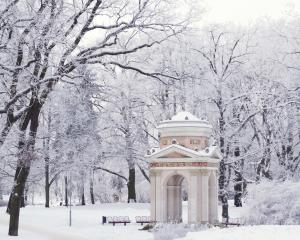
We stepped out of Taoyuan High Speed Rail Station into a dazzling field of light, the site of Taiwan’s national Lantern Festival for 2025. Larger-than-life paper lanterns in the shape of cartoon characters, flowers or dragons glowed, while smaller LED lights twinkled or changed colour. Lanterns strung in rows overhead formed colourful paths that drew us to the main stage. Although the clouds overhead were grey and there was a light drizzle, a large crowd was already assembling there for the festival’s official opening. While many people clustered around the stage, watching musicians perform, others strolled among the lanterns, taking photos of the stunning displays.

A Taiwanese tradition
The lantern festival is celebrated on the 15th day of the first month in the lunar calendar, marking the end of the lunar New Year. It has a long history in Taiwan, with each town holding its own local festival. As we travelled around Taiwan, we’d spotted New Year lanterns strung above streets and displays of massed lanterns at the entrance to temples. These lanterns often had wishes for the coming year written on them.
One of these displays was at Ciyou temple in Taipei. Locals had crafted lanterns in varied and imaginative shapes, including snakes as this is the Year of the Snake in the Chinese zodiac. The lanterns were made using the traditional technique of paper attached to a wire frame, with lights inside bringing them to life.

The grand opening
With our new-found appreciation for the art of lantern-making, we looked forward to attending the grand opening of the 2025 Taiwan Lantern Festival on February 12. In the midst of the glowing paper lanterns and vivid LED lights, a shadowy shape loomed in front of the stage. This was the main lantern, waiting until the opening ceremony to be lit. TV cameras were there to record the event, starting with speeches from Taiwan’s President Lai Ching-Te and Taoyuan’s local officials.


Fantastical lanterns
As the main lantern lit up, light was restored to the festival’s other lanterns. I’d had time to wander around before the opening ceremony to look at the variety of creative lanterns displayed at the festival, surrounded by fields of fairy lights. Many lanterns were traditional wire and paper lanterns lit from within, with a warm glow that reflected on the wet pavement. Some lanterns were beautifully detailed, with subtle shading and facial features painted on.


As well as the traditional lanterns, modern technology such as digital signs and LED lighting was used. A forest of LED trees pierced the rain with vivid hues of pink, green and blue, casting reflections on the spreading puddles and the wet umbrellas that were now everywhere. A waterfall of blue light seemed to flow into the ground. A digital screen kept score on an interactive game that families with children were enjoying.

Food and festivals go together, and in a foodie country like Taiwan, there was plenty of food as well as lanterns. An agricultural market showcased produce from local farmers, while over 100 food stalls offered everything from Taiwanese street food to innovative culinary creations.
With the rain getting heavier, I only peeked at the food stalls as I wanted to be dry more than I wanted to sample delicious Taiwanese food. The chain store plastic rain poncho that I was wearing provided surprisingly good protection against the heavy downpour, but my shoes were soaked. It was time to go back to the station, trying to avoid puddles that had become reflecting ponds for dramatic photos. Many other people decided to call it a night after the opening ceremony but, despite the thousands of visitors, the queues to enter the station were orderly and good humoured.
The 2026 Taiwan Lantern Festival
Next year’s lantern festival will be held at Chiayi in southern Taiwan, in several locations including the National Palace Museum’s southern branch. Because the date is determined by the lunar calendar, it will run from March 3 to March 15, 2026.
Chiayi is less than two hours by high-speed train from Taipei. Its most notable attraction is the southern branch of the National Palace Museum with its excellent collection of Chinese ceramics and jade. Other sights include historic buildings from the Japanese colonial era and the scenic Alishan Mountain Railway that goes high into the mountains.
— Denise Stephens was hosted by the Taiwan Tourism Administration












